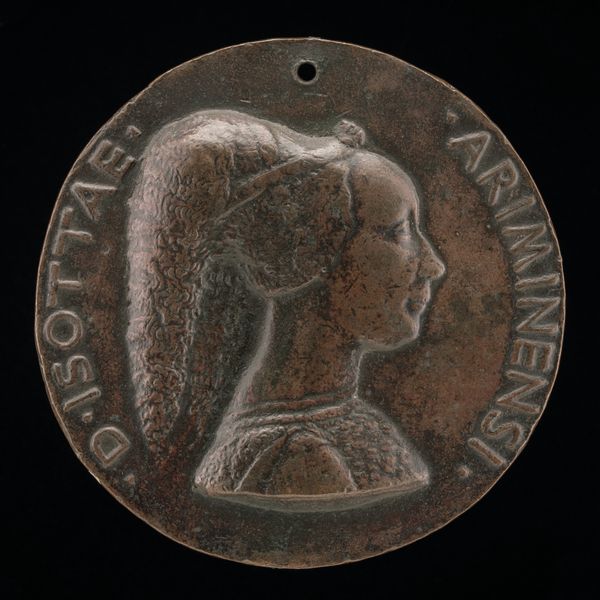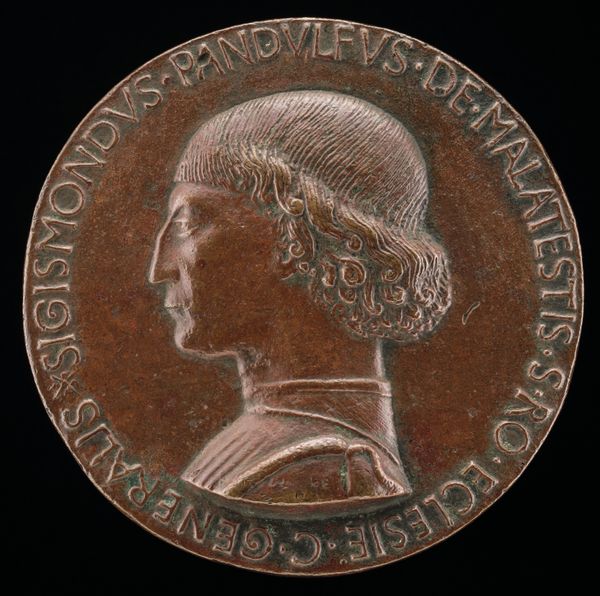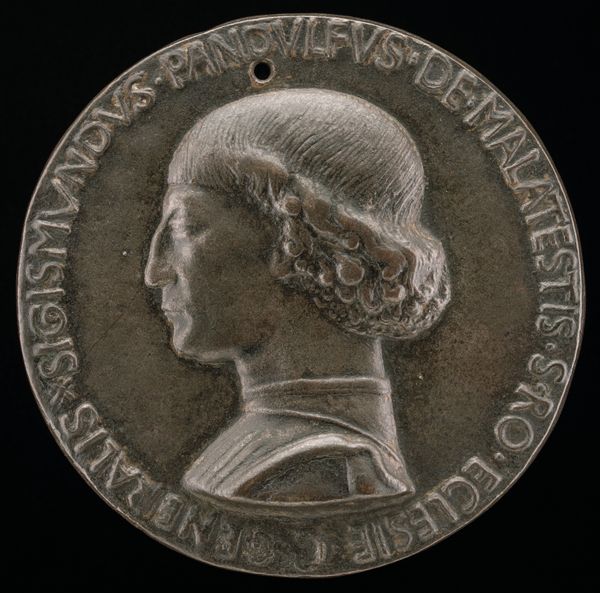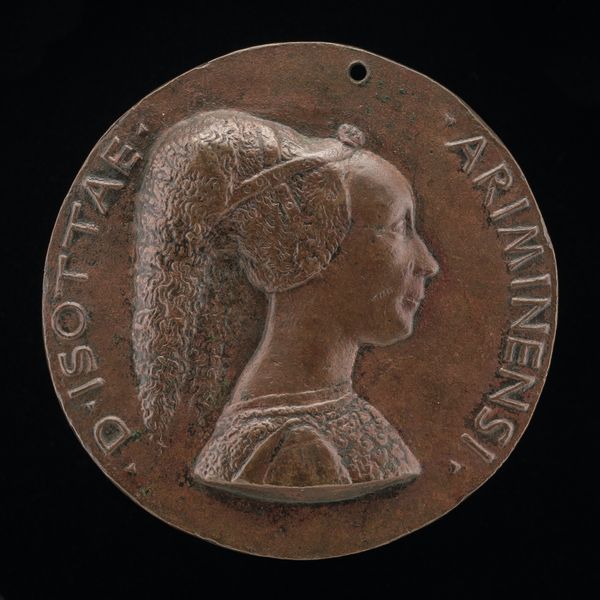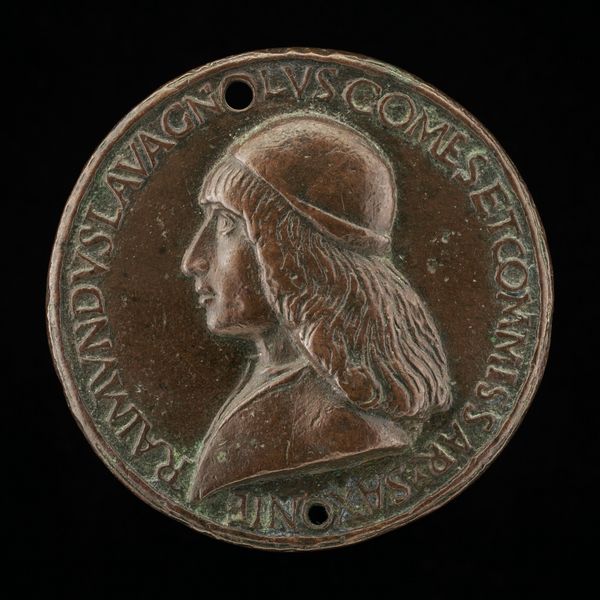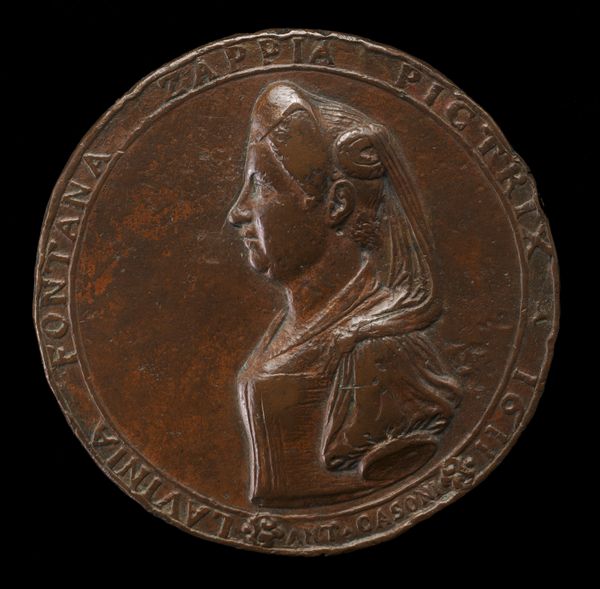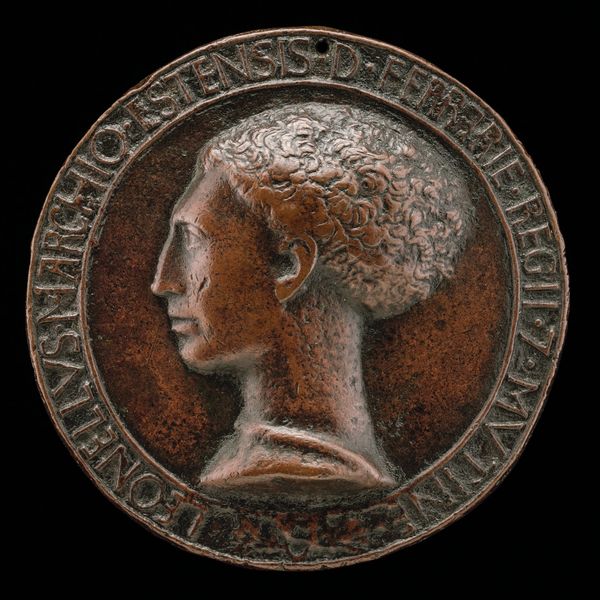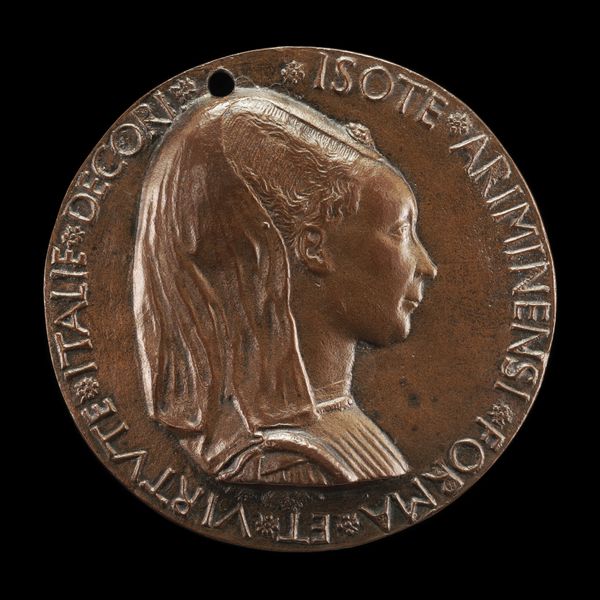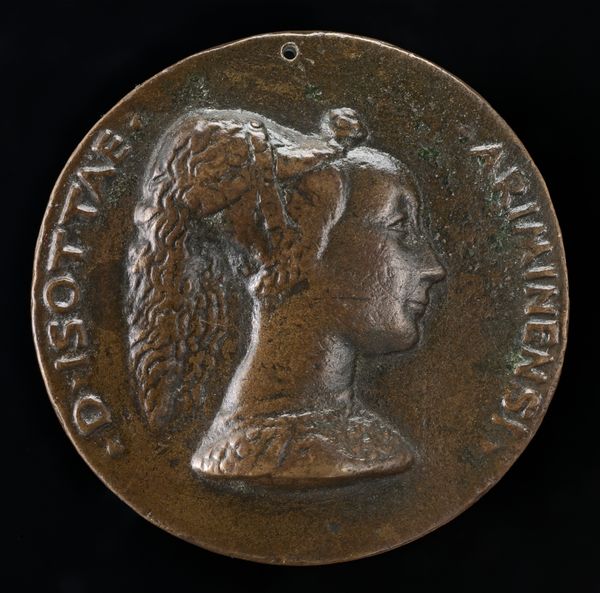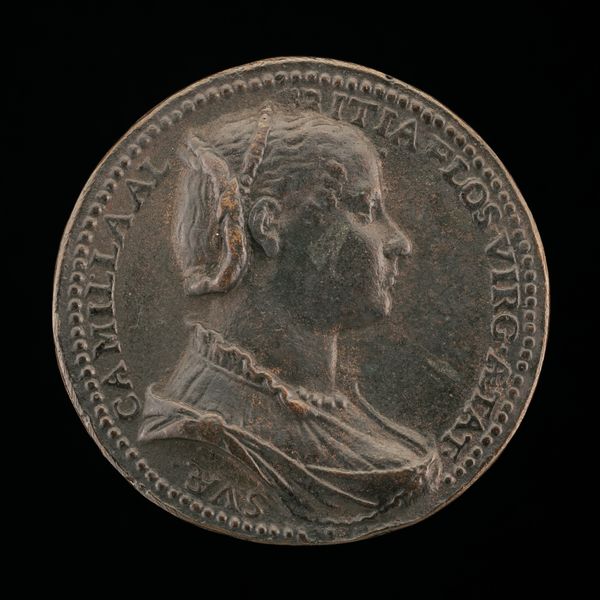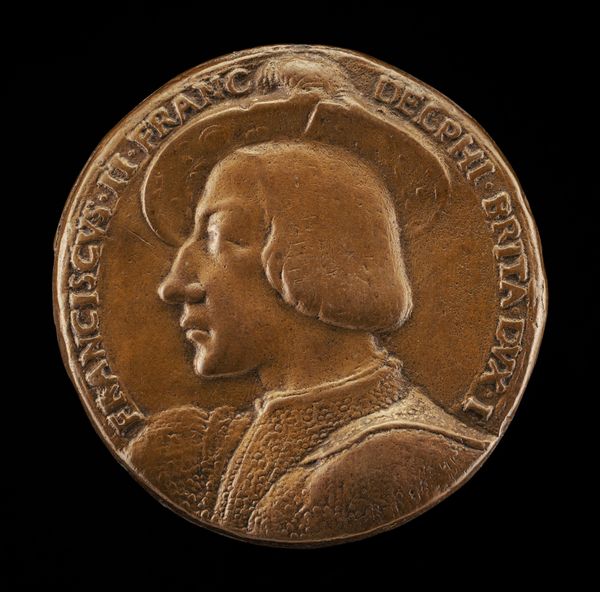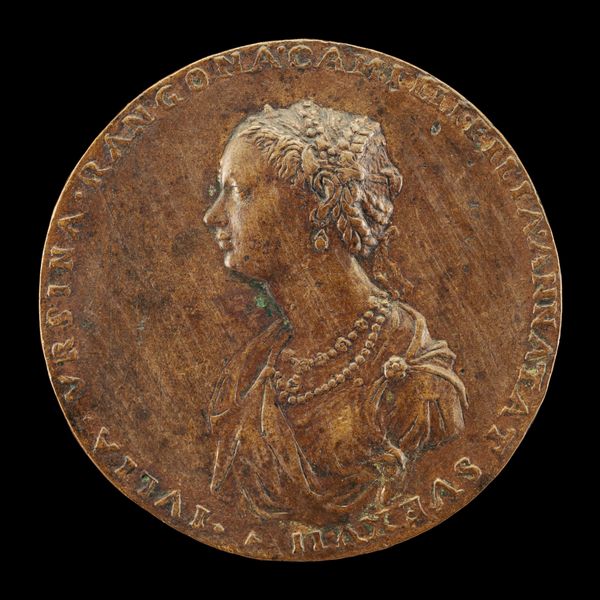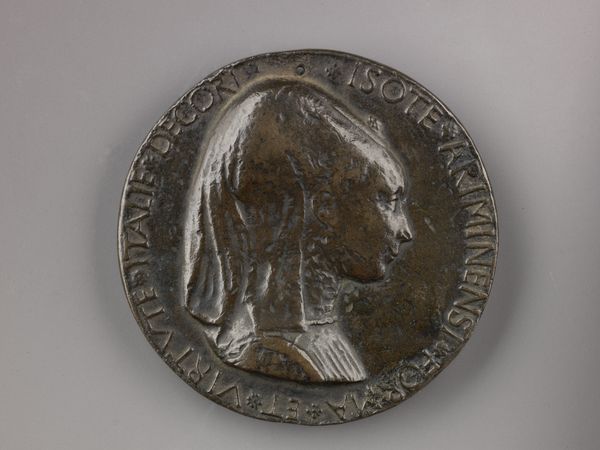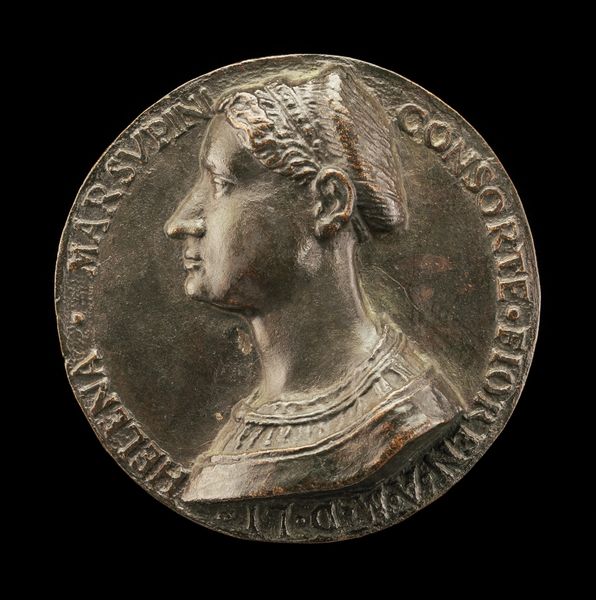![Isotta degli Atti, 1432/1433-1474, Mistress 1446, then Wife after 1453, of Sigismondo Malatesta [obverse] by Matteo de' Pasti](/_next/image?url=https%3A%2F%2Fd2w8kbdekdi1gv.cloudfront.net%2FeyJidWNrZXQiOiAiYXJ0ZXJhLWltYWdlcy1idWNrZXQiLCAia2V5IjogImFydHdvcmtzLzQ1ZmJjYjFmLTEwYWEtNGMyNy1iMjJlLThiOTEwZWNhNDdmOS80NWZiY2IxZi0xMGFhLTRjMjctYjIyZS04YjkxMGVjYTQ3ZjlfZnVsbC5qcGciLCAiZWRpdHMiOiB7InJlc2l6ZSI6IHsid2lkdGgiOiAxOTIwLCAiaGVpZ2h0IjogMTkyMCwgImZpdCI6ICJpbnNpZGUifX19&w=3840&q=75)
Isotta degli Atti, 1432/1433-1474, Mistress 1446, then Wife after 1453, of Sigismondo Malatesta [obverse] c. 1450
0:00
0:00
bronze, sculpture
#
portrait
#
medal
#
sculpture
#
bronze
#
11_renaissance
#
sculpture
#
italian-renaissance
Dimensions: overall (diameter): 8.41 cm (3 5/16 in.) gross weight: 258.3 gr (0.569 lb.) axis: 12:00
Copyright: National Gallery of Art: CC0 1.0
Curator: Here we have a bronze portrait medal of Isotta degli Atti, created circa 1450 by Matteo de' Pasti. Isotta, as the inscription tells us, was mistress and then wife of Sigismondo Malatesta. Editor: My first thought is how severe and elegant it is. There's a quiet strength radiating from her profile, and the metal's dark patina enhances the gravity. It feels remarkably intimate for a portrait. Curator: These portrait medals gained popularity in the Italian Renaissance. They were very much about immortalizing oneself but also a kind of soft power move for the elite. Isotta's trajectory from mistress to wife, and being celebrated on a medal, underscores complex social mobility and her strategic alliance through marriage. The inscription that surrounds her head literally translates to: "For beauty, form, virtue, and merit; glory." Editor: Yes, and look closely at the details. Her hairstyle and clothing are rendered meticulously, adhering to the styles and trends of her time. But more than documenting fashion, they speak to her conscious presentation of herself. How much was under her control versus designed as a status symbol imposed from outside? We should not assume she had absolute agency of the image projected here. But let us give credit where it is due. We can detect certain confidence in how she occupies that little circle. Curator: Indeed. Moreover, it suggests a kind of self-fashioning deeply tied to both her social standing and how she wanted to be perceived. The medal itself functions as a carefully constructed representation of identity, intertwined with Renaissance ideals of beauty and virtue. It is also not neutral with regards to the personification of what qualities a woman in such social standing should represent. Editor: Right. So, what seems at first like a celebration is a bit more layered if we consider gender, politics, and the currency of images in Renaissance Italy. To fully appreciate Isotta's medal, you also have to think about who it was intended for. Curator: And how her portrayal intersects with and potentially challenges contemporary norms around women's roles and representations. It speaks volumes about the politics embedded in seemingly straightforward portraiture. Editor: It offers a window into a specific time and a complex individual navigating shifting social terrains, which the object enshrines forever. The power of visual representation, in its multiple layers, never ceases to fascinate me.
Comments
No comments
Be the first to comment and join the conversation on the ultimate creative platform.
